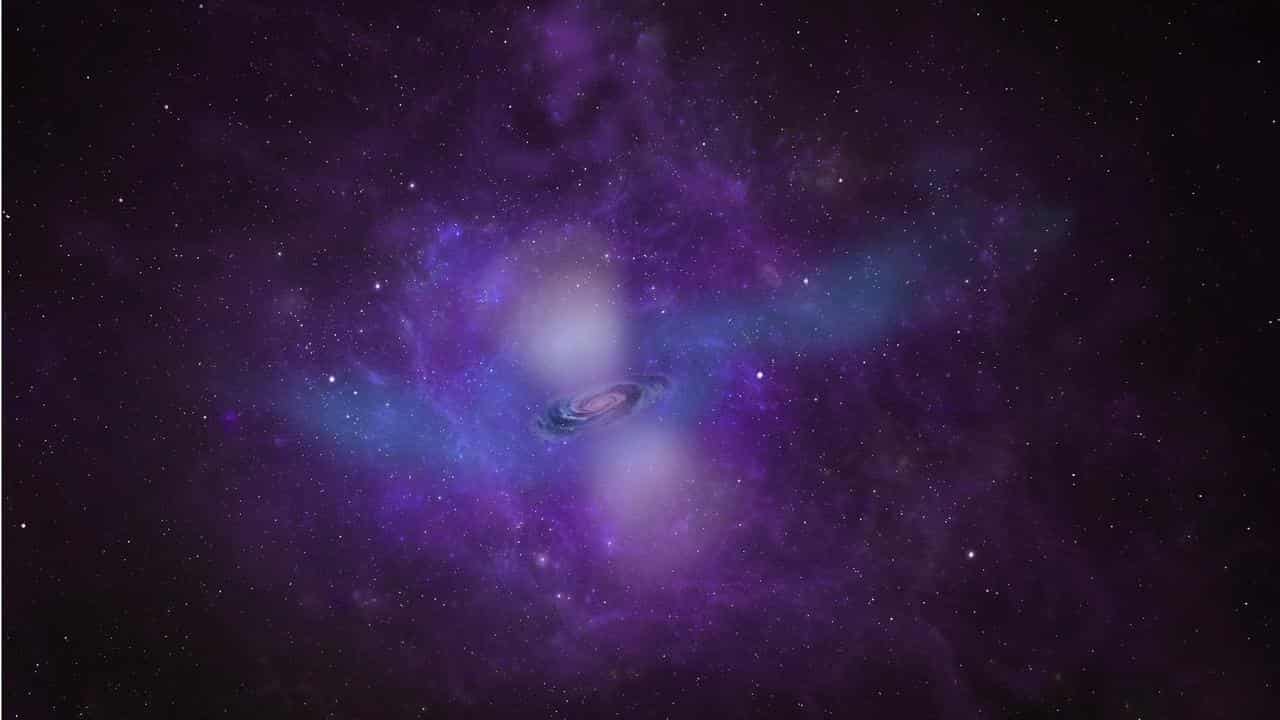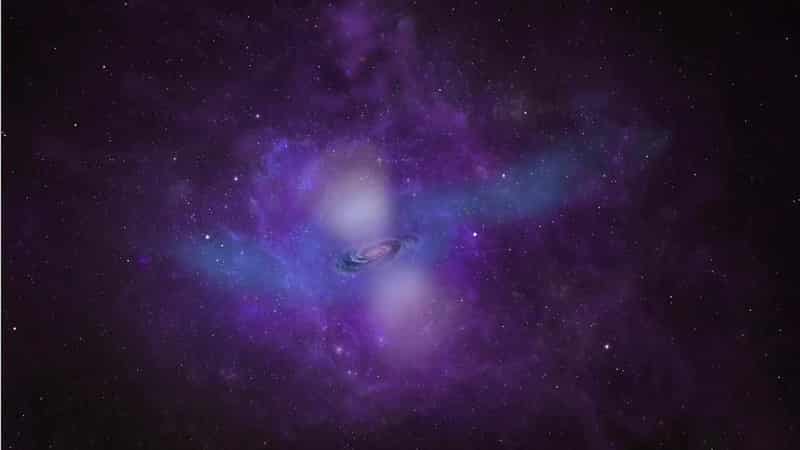
The collision of the Andromeda Galaxy and the Milky Way, once predicted to occur in billions of years, may have already begun.
Galaxies are proving to be much bigger than previously thought after scientists found a gas halo stretching up to a million light years.
The research is using deep-imaging techniques that were able to detect the glowing cloud of gas around a galaxy 100,000 light years into space.

The long reach of the gas shroud is the galaxy's first contact with the wider Universe, according to the study published in academic journal Nature Astronomy.
If the galaxy is typical, then the study indicates that our galaxy, the Milky Way, is already interacting with its closest neighbour, Andromeda.
Researchers at Swinburne, one of nine Australian universities in a project known as Astro 3D, are helping to solve these mysteries through a partnership that gives them access to the Keck telescopes in Hawaii.
"It is the very first time that we have been able to take a photograph of this halo of matter around a galaxy," Astro 3D director Emma Ryan-Weber said.
"It helps us understand how galaxies build mass over time," Prof Ryan-Weber said.

As well as understanding how galaxies evolve, lead author Nikki Nielsen said the study provides some answers to the question of where a galaxy ends.
It was also "highly likely" that the gas shrouds of our own Milky Way and Andromeda were already overlapping, Dr Nielsen said.
"We’re now seeing where the galaxy's influence stops, the transition where it becomes part of more of what’s surrounding the galaxy, and, eventually, where it joins the wider cosmic web and other galaxies," she said.
"These are all usually fuzzy boundaries ... but in this case, we seem to have found a fairly clear boundary."
The Keck cosmic web imager on the 10-metre telescope is one of the most sensitive instruments of its kind in operation, and relies on the very dark sky that is only available on Mauna Kea.
Instead of looking at a stellar disc and measuring the light of luminous quasars, the new technology means the gas that surrounds galaxies, known as the circumgalactic medium, can now be examined - pixel by pixel.
The difference is vast as a galaxy's starlight, typically seen as a disc, extends a mere 7800 light years from its centre.









